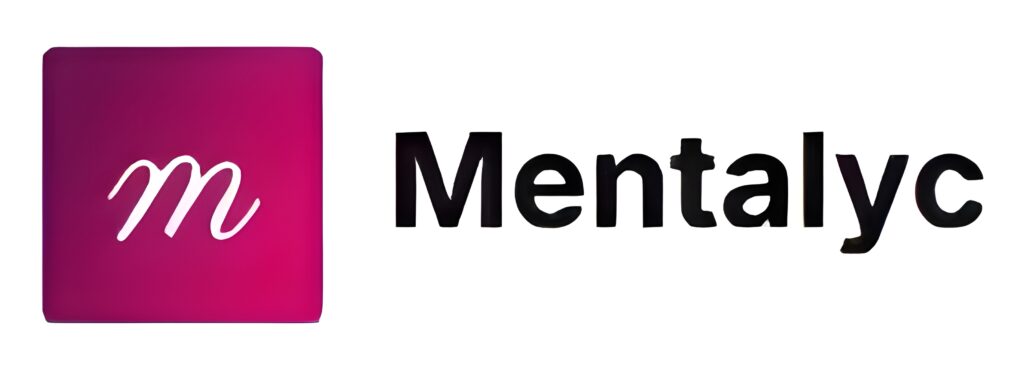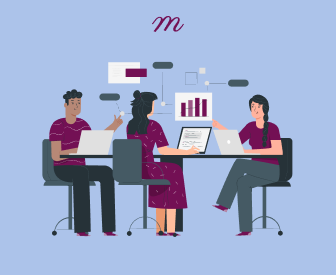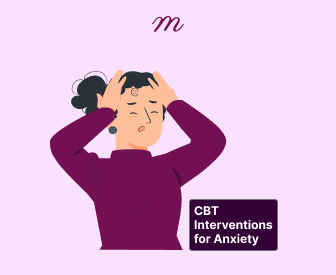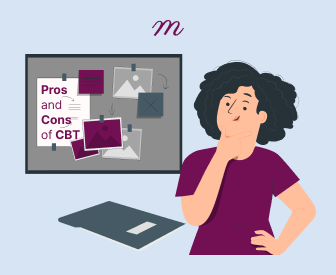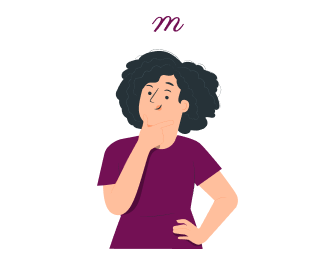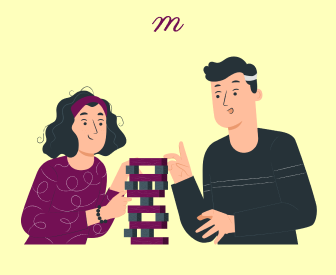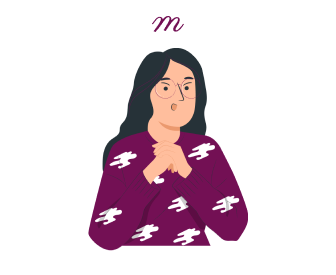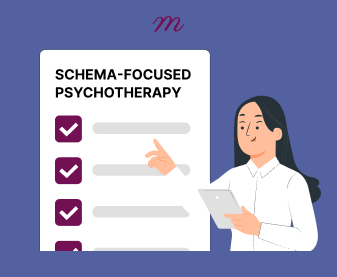Have your progress notes written for you automatically
In mental health therapy, creating a supportive environment is important, especially during challenging times. Group therapy is vital in promoting communal healing, allowing individuals to connect with others facing similar struggles. Guided by dedicated professionals, participants find comfort in shared experiences, forming connections that reduce feelings of isolation and stigma.
This article offers a practical guide, featuring a comprehensive toolkit of 30 diverse group therapy activities designed to enhance sessions and meet various therapeutic goals. Whether the aim is to improve communication, build trust, boost self-esteem, or reduce anxiety, these exercises are tailored to address the complex needs of group members. Detailed activity descriptions, customization tips for different groups, and methods for evaluating effectiveness are included, empowering therapists to enhance their practice and deliver valuable support to clients through group therapy.
Understanding Group Therapy and Its Benefits
Group therapy can be a powerful tool for individuals seeking mental health support. It involves clients coming together with one or more professionals to discuss challenges and receive support openly. This shared space fosters mutual understanding and growth, offering opportunities for mutual learning and development by connecting individuals facing similar issues. Guided by a trained facilitator, these sessions promote self-awareness and emotional healing. Depending on the setting, whether a residential facility, hospital, outpatient counseling center, or rehab center, and insurance requirements, topics may follow a preexisting curriculum, be selected and created by the facilitator, or be inspired by client feedback.
Incorporating group activities into therapy offers significant benefits, including:
- Sense of Community and Camaraderie: In group therapy, a sense of community and camaraderie is fostered, creating a supportive environment where members can share experiences and insights. This helps everyone cope and grow together, reducing feelings of isolation and stigma.
- Support Network: Group members provide crucial support, offering encouragement, advice, and a sense of accountability. This boosts self-esteem, motivation for change, and adherence to treatment plans.
- Diverse Perspectives: Hearing different views and experiences in the group setting provides new insights into personal problems and helps develop more effective coping strategies.
- Social Skills Development and Improved Communication: Group therapy offers a supportive environment for honing social skills, practicing effective communication, and resolving conflicts. This is especially valuable for individuals dealing with social anxiety or interpersonal challenges.
- Confidence and Interpersonal Skills Improvement: Engaging with others in the group can boost self-assurance, improve the ability to express emotions, establish personal boundaries, and cultivate empathy, leading to stronger interpersonal abilities beyond the group setting.
- Normalization of Struggles: By sharing similar experiences, participants realize that their struggles are not unique, fostering a sense of belonging and reducing feelings of shame and isolation.
- Cost-Effectiveness: Group therapy is often more affordable than individual therapy, making it accessible to a broader range of people while allowing mental health professionals to treat more individuals simultaneously.
- Feedback and Reflection: Encouraging honest peer feedback can lead to personal growth by offering new insights into behaviors and thought patterns.
- Modeling Recovery: Witnessing the progress and challenges overcome by others can serve as powerful motivation, providing opportunities for learning from their peers’ successes and setbacks.
- Emotional Expression and Insights: Group discussions can promote appropriate emotional expression and prompt moments of realization that challenge unhelpful thinking patterns and cognitive distortions.
Group therapy can be a valuable option for many individuals, offering an effective way to receive support, gain insight into personal challenges, develop new skills, and connect with others facing similar issues. It can be particularly beneficial for those dealing with complex life events, relationship difficulties, addiction, or mental health conditions. Group therapy sessions provide a dynamic and supportive environment for personal growth and healing when conducted effectively. Facilitators play a critical role in guiding discussions, fostering a safe atmosphere, and ensuring that participants benefit most from the experience. It’s essential to have open conversations with clients to determine if group therapy could be a beneficial addition to their overall treatment plan.
As you plan your group therapy sessions, it’s essential to stay organized and keep track of each participant’s progress to ensure the highest quality of care. Tools that automate documentation even for group sessions, can help streamline the process, allowing you to focus more on client interaction and less on administrative tasks. Tools like these also allow for individual treatment plans and documentation.
Incorporating Group Activities
When organizing group therapy activities, it’s crucial to consider a range of topics and methods that meet the participants’ needs and aims. Choosing various activities that reflect the group’s dynamics and goals is crucial to keeping everyone engaged and motivated. Also, ensure personalized documentation to tailor care to each individual’s unique needs.
These activities can be grouped into several common types:
- Icebreakers and Warm-ups: These activities aim to create a relaxed atmosphere and help members get to know each other better. Simple games like “Two Truths and a Lie” or “Would You Rather” encourage openness and build connections among participants.
- Communication Exercises: Effective communication is fundamental in group therapy. Activities that focus on active listening, “I” statements, and constructive feedback help develop healthier communication habits among members.
- Trust-building Activities: Engaging in activities that promote trust and unity within a group is essential for fostering a sense of confidence and cohesion. These activities may include sharing personal stories, complimenting, or working together on challenges.
- Problem-solving and Conflict Resolution: Encouraging teamwork, compromise, and finding solutions that benefit everyone can help members feel more confident in addressing challenges.
- Psychoeducational Activities:Psychoeducational groups offer valuable opportunities for members to acquire knowledge, gain insight, and develop practical skills to support their mental health and overall well-being. These activities are designed to provide education on various topics, including coping strategies, stress management techniques, recognizing symptoms, and exploring treatment options.
It is crucial to select activities that resonate with the group, nurturing a sense of support, growth, and shared experience, as these are fundamental elements of group therapy. You can enhance your skill in customizing activities for different groups and settings with practice and feedback.
Effective Strategies for Leading Successful Group Therapy
Group therapy provides a platform for individuals to come together, foster connections, gain insights, and move forward collectively, whether in person or virtually. As facilitators, it is crucial to utilize effective strategies, undergo proper training, prioritize the needs of group members, and tailor activities to suit the specific dynamics of each group to lead impactful group therapy sessions.
- Establish Clear Expectations: It’s essential to establish clear expectations for the group, including its purpose, objectives, confidentiality guidelines, and relevant policies. Consistently upholding these expectations and enforcing consequences for rule violations will help create a safe environment for open sharing.
- Acquire Appropriate Training: Acquiring appropriate training is crucial for effective group therapy. This involves gaining specialized skills and expertise through formal education and practical training. Learning techniques for guiding discussions, managing conflicts, and addressing challenging behaviors will enable leaders to have a positive impact on the group dynamic.
- Focus on Members’ Needs: Ensure that group therapy sessions are centered around the members’ individual needs, goals, and progress. Regularly check in to ensure that the activities meet their needs and be open to adjusting the curriculum based on their feedback. Celebrate even the most minor successes of the members to inspire them to continue making an effort.
- Adapt Activities for Diverse Groups: Tailor the activities to accommodate the unique characteristics of each group, such as age, diagnosis, culture, and ability. Provide simplified instructions or visual aids for children or individuals with intellectual disabilities. Be mindful of potential triggers and avoid activities that may cause trauma or grief for specific groups. Understanding how cultural differences affect group dynamics and response to interventions is necessary. With the proper adjustments, most activities can be effective for various populations.
30 Mental Health-Based Group Therapy Activities
Group therapy activities are vital in nurturing trust, enhancing communication, and fostering personal growth within therapeutic settings. These activities provide valuable opportunities for individuals to delve into their emotions, develop effective coping strategies, and build connections with others navigating similar challenges. Whether it’s an icebreaker or a mindfulness exercise, each activity is thoughtfully crafted to address group therapy participants’ diverse needs and goals. Therapists can utilize these activities to create a supportive and nurturing environment that promotes healing and self-discovery, regardless of whether they are working with adults, teenagers, or children.
- Creative Problem-Solving Challenge
- Age Range: Teens and Adults
- Ideal Populations: Individuals with anxiety, depression, or low self-esteem
- Therapeutic Goals: Improve problem-solving skills and reduce anxiety through collaborative and creative thinking.
- Life Metaphor Collage
- Age Range: Teens and Adults
- Ideal Populations: Individuals in grief, trauma survivors, those seeking self-awareness
- Therapeutic Goals: Facilitate self-awareness and insight by visualizing life experiences.
- Emotion Thermometer
- Silent Reflection Walk
- Age Range: All age groups
- Ideal Populations: Individuals with high stress or anxiety levels, those needing mindfulness practice
- Therapeutic Goals: Reduce stress and enhance mindfulness through a calming and reflective activity.
- Personal Coat of Arms
- Materials: Paper, markers, colored pencils
- Age Range: Children and Teens
- Ideal Populations: Individuals with low self-esteem or those in self-discovery phases
- Therapeutic Goals: Enhance self-esteem and self-awareness by focusing on personal strengths and values.
- Group Mandala Creation
- Materials: Large paper, various art supplies
- Age Range: All age groups
- Ideal Populations: Individuals with anxiety, those seeking relaxation and mindfulness
- Therapeutic Goals: Through collaborative art, foster group cohesion, teamwork, and community and promote individual self-expression and relaxation.
- Support Network Mapping
- Materials: Paper, markers
- Age Range: Children and Teens
- Therapeutic Goals: Enhance awareness of support systems and promote gratitude.
- Guided Poetry Writing
- Age Range: Teens and Adults
- Ideal Populations: Individuals with depression, trauma survivors, and those seeking emotional expression
- Therapeutic Goals: Enhance emotional expression, self-reflection, and insight through creative writing.
- Interactive Story Building
- Age Range: Children and Teens
- Ideal Populations: Individuals with social anxiety, those needing to improve communication skills
- Therapeutic Goals: Improve communication skills and promote creativity and cohesion within the group.
- Mindful Coloring
- Materials: Mandala coloring books, colored pencils, markers
- Age Range: Children, Teens, and Adults
- Ideal Populations: Individuals with anxiety, those needing mindfulness practice
- Therapeutic Goals: Reduce stress and anxiety, enhance mindfulness and focus through coloring.
- Letter Writing
- Materials: Paper, pens
- Age Range: Teens and Adults
- Therapeutic Goals: Encourage self-reflection and promote personal growth.
- Values Auction
- Materials: Fake money, value cards
- Age Range: Children and Teens
- Ideal Populations: Individuals seeking self-awareness or undergoing life transitions
- Therapeutic Goals: Clarify personal values and priorities, promoting self-awareness and meaningful living.
- Body Mapping
- Materials: Large paper, markers, crayons
- Age Range: Teens and Adults
- Ideal Populations: Trauma survivors, individuals with psychosomatic symptoms
- Therapeutic Goals: Enhance body awareness and emotional insight by mapping emotions to physical sensations.
- Symbolic Object Sharing
- Materials: Personal items from group members
- Age Range: All ages
- Ideal Populations: Individuals with PTSD, those seeking to build empathy and connection
- Therapeutic Goals: Encourage self-expression and empathy and deepen understanding of personal significance through sharing meaningful objects.
- Stress Ball Making
- Materials: Balloons, flour or rice, funnel
- Age Range: Children and Teens
- Ideal Populations: Individuals with anxiety, those needing coping tools for stress
- Therapeutic Goals: Promote stress relief and anxiety management through a tangible coping mechanism.
- Role-Playing Empathy / Role-Playing Conflict Resolution
- Materials: Scenario cards
- Age Range: Teens and Adults
- Ideal Populations: Individuals with social anxiety, those needing to enhance empathy and social skills
- Therapeutic Goals: Enhance empathy and understanding of others’ experiences through role-playing different perspectives.
- Vision Board Creation
- Materials: Magazines, scissors, glue, large paper
- Age Range: Children and Teens
- Ideal Populations: Individuals with depression, those in self-discovery or goal-setting phases
- Therapeutic Goals: Promote goal-setting and motivation through visual representation of future aspirations.
- Nature Mandalas
- Materials: Leaves, rocks, flowers, etc.
- Age Range: All age groups
- Ideal Populations: Individuals with anxiety, those needing mindfulness and relaxation
- Therapeutic Goals: Foster mindfulness, creativity, and connection to nature, reducing stress and promoting creativity.
- Mindful Eating
- Materials: Small food items (e.g., raisins, chocolate)
- Age Range: All age groups
- Therapeutic Goals: Increase mindfulness and enhance sensory awareness.
- Empathy Circle
- Materials: Talking stick or object
- Age Range: Teens and Adults
- Ideal Populations: Individuals with social anxiety, those needing to improve listening and empathy skills
- Therapeutic Goals: Improve empathy, listening skills, and communication by sharing and listening in a supportive circle.
- Music Sharing
- Materials: Music player
- Age Range: Teens and Adults
- Ideal Populations: Individuals with depression, those seeking to express emotions through music
- Therapeutic Goals: Facilitate emotional expression and understanding through the sharing of music.
- Strengths Chain
- Materials: Paper strips, markers, stapler, or tape
- Age Range: Children and Teens
- Ideal Populations: Individuals with low self-esteem, those needing to recognize personal strengths
- Therapeutic Goals: Boost self-esteem and promote group cohesion by recognizing and celebrating personal strengths.
- Mindful Gardening
- Materials: Plants, soil, pots, gardening tools
- Age Range: All age groups
- Ideal Populations: Individuals with high stress or anxiety, those seeking mindfulness and relaxation
- Therapeutic Goals: Reduce stress, enhance mindfulness, and foster a connection with nature through gardening.
- Collaborative Storybook
- Materials: Paper, markers, binding materials
- Age Range: Children and Teens
- Ideal Populations: Individuals with social anxiety, those needing to enhance creativity and teamwork
- Therapeutic Goals: Promote creativity, teamwork, and narrative skills through collaborative storytelling.
- Life Timeline
- Materials: Paper, markers
- Age Range: Teens and Adults
- Therapeutic Goals: Promote self-reflection and enhance understanding of life patterns.
- Photo Voice
- Materials: Cameras or smartphones
- Age Range: Teens and Adults
- Ideal Populations: Individuals with PTSD, those seeking to express personal experiences visually
- Therapeutic Goals: Enhance self-expression and awareness by capturing and discussing personal photos.
- Guided Journaling
- Materials: Journals, pens, prompts
- Age Range: Teens and Adults
- Ideal Populations: Individuals with depression, those seeking to enhance self-reflection
- Therapeutic Goals: Promote self-reflection and a more profound understanding through guided journaling exercises.
- Legacy Building
- Materials: Paper, markers, craft supplies
- Age Range: Teens and Adults
- Ideal Populations: Individuals in life transitions, those seeking purposeful living
- Emotion Charades
- Supplies: Slips of paper with emotions written on them, pens
- Age Range: Children and Teens
- Ideal Populations: Individuals with social anxiety, those needing to improve emotional recognition
- Therapeutic Goals: Improve emotional recognition and non-verbal communication skills through playful interaction.
- Mindfulness Meditation
- Materials: Quiet space, optional soft music
- Age Range: Suitable for all age groups
- Therapeutic Goals: Promote relaxation, reduce stress, and enhance mindfulness.
Adaptations and Variations
Tailoring group therapy activities to each group’s specific needs is crucial.
Here’s how you can customize activities for optimal engagement and effectiveness:
Consider Age and Ability
- For Children and Teens: Focus on fun and engaging activities that help develop essential skills, using clear instructions.
- For Adults: Consider adding extra steps or encouraging deeper self-reflection to make activities more challenging and meaningful.
- For Groups with Disabilities or Mental Health Conditions: Simplify activities, reduce writing requirements, allow more time, and provide strong guidance and support as needed.
Cultural Sensitivity
- Respect Cultural Backgrounds: Consider group members’ beliefs and values to ensure inclusive and respectful activities.
- Avoid Isolation: Steer clear of activities that may isolate individuals or make them feel uncomfortable.
- Adapt as Needed: Be open to adjusting activities based on cultural considerations and address any concerns group members raise directly.
Adjusting to Group Dynamics
- Flexibility is crucial: Be open to adjusting activities based on the group’s needs and dynamics.
- Group Dynamics: Observe how group members react and engage during activities.
- Be Adaptive: If you notice disengagement or confusion, be ready to switch tactics to ensure the activities are helpful and meaningful.
- Seek Feedback: Regularly ask for feedback to improve and personalize activities for each unique group.
Adapting activities to accommodate group members’ diverse abilities, backgrounds, and current needs is vital for effective group therapy. With practice, therapists can become adept at customizing activities to suit different groups, ultimately improving the group therapy experience for all participants.
Conclusion
Remember to access this comprehensive toolkit of 30 engaging and therapeutic group activities to improve your clients’ mental health, foster relationships, develop social skills, and promote self-discovery. Take the lead in guiding groups to connect, heal, and grow by confidently implementing these activities. Remember to adapt the activities to suit your group’s unique needs, regularly evaluate their effectiveness, and uphold ethical practices. Keep exploring new activities and refining your facilitation skills to maximize the impact on your participants’ lives. Remember, you’re not alone in this journey—reach out to colleagues and professional networks for support and guidance. Your dedication to making a difference in people’s lives is invaluable. You’ve got this!
Unleash the power of Mentalyc to simplify your therapy sessions, revolutionize the way you write progress notes (even for group therapy!), optimize practice management, and elevate client support. Start your trial today to access new tools and streamline your private practice. Start your trial now and experience the difference firsthand!
Group Therapy Activities FAQs
What is group therapy, and how does it work?
Group therapy involves one or more therapists working with several people simultaneously. It provides a supportive environment where individuals can share experiences, gain insights, and work on personal growth together. Group therapy fosters mutual understanding, support, and healing through guided discussions, activities, and interactions.
What are the benefits of group therapy compared to individual therapy?
Group therapy offers numerous advantages compared to individual treatment. It provides clients with the opportunity to connect with others who are dealing with similar challenges, gain fresh perspectives, and learn from their peers’ experiences. The activities in group therapy promote bonding, enhance communication skills, and foster trust. This setting allows individuals to experiment with new behaviors in a supportive environment and receive valuable social support.
What types of group therapy activities are there?
There are activities for different ages and goals:
- Icebreakers and warm-ups: Encourage people to open up and initiate conversations, which is particularly beneficial for new groups.
- Communication exercises: Enhance listening skills, encourage sharing, and provide constructive feedback, aiding conflict resolution.
- Trust-building: Foster cooperation and openness, especially for groups where there is a lack of trust or insecurity.
- Problem-solving: Acquire new strategies to overcome obstacles and manage challenging emotions and situations.
- Creative arts: Use art, music, drama, etc., to explore emotions and experiences. This is particularly effective for children and teens.
- Mindfulness: Focus on the present moment to reduce stress and increase self-awareness of thoughts and feelings.
- Cognitive-behavioral: Challenge negative thoughts and behaviors and learn effective coping strategies.
How can therapists enhance group therapy sessions?
To improve group therapy sessions, therapists should:
- Establish expectations and guidelines
- Obtain the necessary training and skills
- Focus on the needs and goals of the members
- Adapt activities for diverse groups
- Seek regular feedback and evaluation
How do I choose and lead group activities?
Take into account your group’s requirements and objectives. Begin with icebreakers and gradually progress to more demanding activities. Provide clear instructions and demonstrate when necessary. Discuss the participants’ feelings after each activity and gather feedback on how to enhance the experience. Possess strong facilitation skills, establish ground rules, and cultivate a supportive atmosphere. Adhere to ethical standards and be ready to address any issues.
How often should group therapy meet?
The frequency and duration of group therapy sessions should be customized to align with the group’s objectives and advancements. Some groups convene weekly or biweekly for a specific duration, while long-term group therapy may be suggested for certain conditions to offer sustained support.
Can group therapy activities be adapted for virtual sessions?
Absolutely! Group therapy activities can be adjusted for virtual sessions using various online platforms, video conferencing tools, and digital resources. Modifying activities to fit the online format is crucial, ensuring they are engaging and accessible for all group members. You can also incorporate interactive elements, breakout rooms, and multimedia features to enrich the virtual experience and promote a sense of connection among participants.
How can I evaluate the effectiveness of group therapy activities?
Assessing the impact of group therapy activities is vital; it is essential to gather feedback from group members, observe their participation and engagement, track progress toward therapeutic goals, and evaluate changes in behavior or attitudes over time. Qualitative and quantitative measures can help measure outcomes and guide future planning and adjustments.
Resources:
- Ackerman., C. E. (2017, July 26).Your Ultimate Group Therapy Guide (+ Activities & Ideas). PositivePsychology.com. https://positivepsychology.com/group-therapy/
- American Psychological Association. (2019, October 31). Psychotherapy: Understanding Group Therapy. https://www.apa.org/topics/psychotherapy/group-therapy
- Cherry, K. (2024, January 12).What Is Group Therapy? Verywell Mind. https://www.verywellmind.com/what-is-group-therapy-2795760
- Novotney, A. (2019, April).Keys to Great Group Therapy. American Psychological Association. https://www.apa.org/monitor/2019/04/group-therapy
